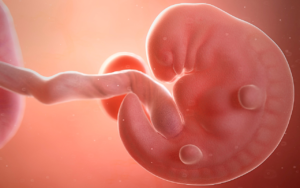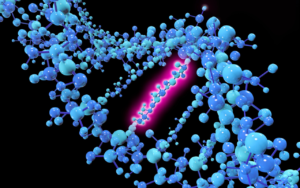In the realm of medical science, developmental disorders stand as a multifaceted puzzle, with both genetic and environmental pieces contributing to their intricate nature. This blog delves deep into the labyrinth of these disorders, spotlighting conditions like Down syndrome and spina bifida, and dissecting the complex interplay of factors that give rise to these conditions. Join us as we embark on a journey to understand the causes and consequences of developmental disorders.
Understanding Developmental Disorders: A Brief Overview
Developmental disorders encompass a broad spectrum of conditions that impede the typical growth and maturation of an individual’s physical, cognitive, or emotional faculties. These disorders can manifest in various ways, from impairments in motor skills to challenges in communication and social interactions.
Table of Contents
Genetic Factors: The Blueprint of Complexity
Genetic factors stand as fundamental keystones in the intricate architecture of developmental disorders. These disorders, which encompass a spectrum of conditions affecting various aspects of an individual’s growth, are often deeply rooted in their genetic makeup. The blueprint of our genetic code contains the instructions for the formation and functioning of every bodily system. In cases like Down syndrome, an extra copy of chromosome 21 disrupts this delicate balance, leading to characteristic physical features and intellectual disabilities. Additionally, conditions like autism spectrum disorder (ASD) highlight the complexity of genetic factors, where certain gene mutations can contribute to a heightened susceptibility to the disorder when combined with specific environmental triggers.
Examples of Developmental Disorders
Two prominent examples of the profound impact of genetic factors on developmental disorders are Down syndrome and spina bifida. Down syndrome, often caused by a random genetic mutation during the formation of reproductive cells, results in the individual possessing an extra chromosome 21. This extra genetic material alters typical development, leading to a range of cognitive and physical challenges. Similarly, spina bifida underscores the critical role of genetics in neural tube closure. When a developing fetus lacks certain genetic instructions for proper neural tube formation and closure, it can result in this neural tube defect, leading to varying degrees of paralysis and other neurological complications.
Pioneering Progress: The Importance of Genetic Understanding
Understanding the genetic underpinnings of developmental disorders is a pivotal step towards devising targeted interventions and comprehensive treatment strategies. As our knowledge of genetic factors deepens, researchers and medical professionals can refine early screenings and implement personalized therapies for individuals with these conditions. Genetic research also offers hope for a future where preemptive measures can be taken to mitigate the impact of genetic predispositions. By harnessing the power of genetics, the medical community is charting a course towards a better understanding of developmental disorders and paving the way for improved quality of life for those affected by these complex conditions.
Environmental Factors
1: The Crucial Role of Environmental Factors in Developmental Disorders
Environmental factors wield substantial influence in the intricate tapestry of developmental disorders. These external influencers interact with an individual’s genetic predispositions to shape the course of development, often leading to a spectrum of conditions. From prenatal exposure to toxins to maternal stress during pregnancy, these factors play a pivotal role in determining the trajectory of an individual’s health. By understanding how environmental factors contribute to developmental disorders, we can implement targeted interventions and preventive measures to mitigate their impact.
2: Unveiling Environmental Factors: Examples of their Impact
Prenatal exposure to harmful substances stands as a stark example of how environmental factors can trigger developmental disorders. For instance, maternal consumption of alcohol during pregnancy can result in Fetal Alcohol Syndrome (FAS), characterized by cognitive impairments and physical abnormalities. Another poignant example is the correlation between maternal infection and developmental disorders. Infections during pregnancy, like rubella, can significantly heighten the risk of congenital anomalies such as hearing loss and heart defects. These instances underscore the need for heightened awareness of the environment’s role in shaping the health of the developing fetus.
3: Navigating a Healthier Future: Addressing Environmental Factors
As our understanding of developmental disorders deepens, it becomes clear that a comprehensive approach must be adopted to address the multifaceted interplay of genetics and environment. By identifying key environmental factors and implementing strategies to minimize their impact, we can potentially prevent or mitigate the emergence of developmental disorders. This proactive stance involves educating expectant mothers about the risks associated with certain behaviors and exposures during pregnancy. As research advances, the collective effort to recognize and address the significance of environmental factors in developmental disorders paves the way for a healthier future for generations to come.
Interaction Between Genetics and Environment
1: The Intricate Dance of Genetics and Environment in Developmental Disorders
In the intricate realm of developmental disorders, the interaction between genetics and environment emerges as a pivotal force driving the formation and manifestation of these complex conditions. Genetic predispositions lay the groundwork, setting the stage for an individual’s susceptibility to environmental triggers. A prime illustration lies in conditions such as autism spectrum disorder (ASD). Individuals with certain genetic mutations linked to ASD might be more prone to its development when exposed to specific environmental factors during crucial developmental stages. This interaction highlights the nuanced interplay between nature and nurture, where the delicate balance between genetics and environment can significantly impact the trajectory of developmental disorders.
2: Genetic Susceptibility and Environmental Triggers: A Dynamic Duo
The interplay between genetics and environment acts as a dynamic duo shaping the landscape of developmental disorders. Consider Down syndrome, where an extra copy of chromosome 21 leads to distinctive features and intellectual challenges. While this genetic variation arises spontaneously, certain environmental factors during pregnancy can exacerbate the condition’s severity. For instance, maternal exposure to toxins or infections might intensify the cognitive and physical manifestations of Down syndrome in the developing fetus. This demonstrates how genetic susceptibility and environmental triggers synergistically contribute to the complexity of developmental disorders.
3: Navigating Towards Comprehensive Understanding and Solutions
As we delve deeper into the intricate dance of genetics and environment in developmental disorders, we uncover invaluable insights that pave the way for more comprehensive understandings and solutions. Recognizing the intricate interplay between these factors is not only vital for unraveling the mysteries behind conditions like spina bifida, where insufficient maternal folic acid intake interacts with genetic susceptibility to lead to neural tube defects, but also for devising tailored interventions. This holistic approach acknowledges that genes alone do not dictate the outcome of developmental disorders; rather, they harmonize with environmental influences to create a multidimensional tapestry of challenges and opportunities.
Implications and Future Directions
Tailored Therapies and Interventions
The insights gained from dissecting the causes of developmental disorders hold the promise of tailored therapies. For instance, in cases of autism spectrum disorder (ASD), pinpointing the specific genetic and environmental factors that contribute to an individual’s condition can guide personalized interventions. This might involve designing behavioral therapies that target the individual’s unique challenges, thereby maximizing the potential for improvement. This tailored approach acknowledges the diversity within developmental disorders and strives for more effective outcomes.
Early Detection and Intervention
Understanding the intricate interplay between genetics and environment in developmental disorders paves the way for early detection. Imagine a scenario where infants at high genetic risk for conditions like Down syndrome are identified shortly after birth. By monitoring their developmental milestones and offering timely interventions, such as speech therapy or occupational therapy, healthcare professionals can potentially mitigate the impact of these disorders. Early detection also empowers parents with knowledge and support, allowing them to make informed decisions for their child’s future.
Advancements in Genetic Counseling
As our comprehension of the genetic underpinnings of developmental disorders grows, genetic counseling becomes increasingly sophisticated. Couples planning to start a family can benefit from comprehensive genetic testing that assesses potential risks for developmental disorders. Armed with this knowledge, they can make informed decisions about family planning and explore options like preimplantation genetic diagnosis (PGD) to ensure the birth of healthy children. This proactive approach exemplifies how the exploration of developmental disorder causes shapes the landscape of reproductive healthcare.
In the journey towards unraveling the complexities of developmental disorders, these implications and future directions stand as beacons of hope. They not only drive research and medical advancements but also underscore our commitment to fostering a world where every individual, regardless of their challenges, can thrive and reach their fullest potential.




